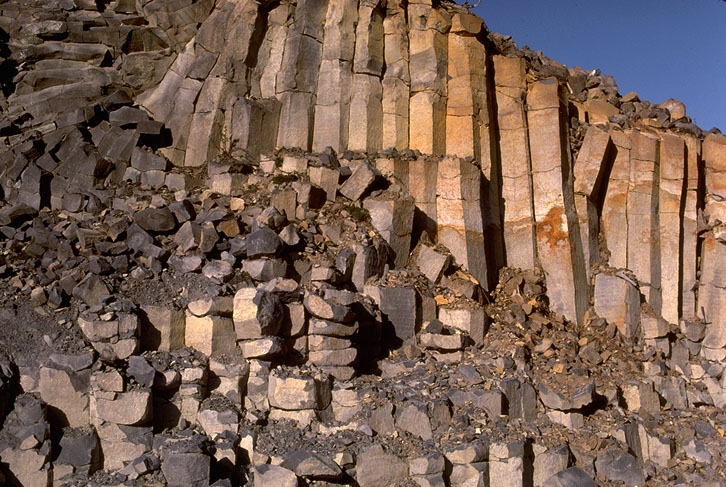Home › The Forums › Ancient Mysteries and various topics › Nan Madol and Ancient Food Terraces › Nan Madol…recent or recycled?
Tagged: "Ancient Civilization", "Nan Madol", Archaeology
This topic contains 8 replies, has 4 voices, and was last updated by Preston 10 years, 7 months ago.

Columnar Jointing creates a fine material for builders of megaliths, temples, and buildings of the ancient landscapes of Indonesia, a highly active volcanic region.
So, in a site like Nan Madol, how do we approach the possibilities which are presented by the use of such Basalt stones, which clearly have been quarried from some larger Columnar Jointing region?
How do we determine the location of where the stones came from, and how they were brought there in any megalithic times, and how can we accurately calculate the age of a site which uses these preformed natural occurring building blocks?
Then, if we do find the right quarries, or formations….how do we know the most recent builders of any site such as Nan Madol are the first to use these particular stones?
We can most likely figure the origin of the stones on land, yet finding any formations which have been submerged through cataclysmic events, would be challenging indeed.
If the stones of Nan Madol have only been used once, then why are they so haphazardly stacked, and why do they seem to be randomly sized, as if they were being pulled from another area, and used randomly by their average length and thickness?
A truly talented set of megalithic builders would certainly be able to make such structures more detailed, and geometrically perfect, so I theorize that some of the stones of Nan Madol have perhaps not been used twice, but maybe even more.
What will help to determine this, is a trip there, to seek areas on the existing stones, which indicate reuse and recycling. Notches and pegs where they shouldnt be or arent needed would be the first thing I would look for…then, waterlines or soil lines from previous locations or structures would also be observable if they were pirated from another place by later masons.
This was posted by Dave Goshorn
One of the very best investigative sites for GQ. Ancient legends say wizards came across the sea and built it in one night with “flying dragons.” Lots of underwater stuff to check out. We’d like to take a good close look and really figure it out, if we can get there.
Yes thanks for this Dave, when I get home I will dig more into this. Let’s just finalize it – we are going there!
Sometimes you just have to see for yourself, these things which so many have kept quiet.
Boots on the ground!
we are flying first class, right? 😀
[quote=546]Sometimes you just have to see for yourself, these things which so many have kept quiet. Boots on the ground! we are flying first class, right? ![]() [/quote]
[/quote]
Hah, i wouldn’t mind my first, first class trip to be Nan Madol!
One of many very curious sites in that region.
One of the potential reasons for the structure is that the basalt was originally highly magnetized and the formation was oriented to focus the magnetic energy of the stones to essentially ‘degauss’ the energy of typhoons as they came west across the Pacific Ocean on their way to the Luzon are where another ancient terraformed site of massive food production is located.
Hey Robert, do you have any good references I could use to look more into what you mentioned above?
Hey Preston,
I’ll dig up some links and a pdf or two and post them for your consideration.
I’m also interested in your thoughts on the impact crater and resulting chevron’s on the south end of Madagascar as well as the one in the New Zealand.
Are you familiar with the Holocene Impact working group?
http://tsun.sscc.ru/hiwg/hiwg.htm
[quote=555]Hey Preston, I’ll dig up some links and a pdf or two and post them for your consideration. I’m also interested in your thoughts on the impact crater and resulting chevron’s on the south end of Madagascar as well as the one in the New Zealand. Are you familiar with the Holocene Impact working group? http://tsun.sscc.ru/hiwg/hiwg.htm [/quote]
Wow yes I am, actually. If I’m not mistaken that’s the group who attributed the Chevron deposits to the impact crater in the Indian Ocean? My only issue with tsunami waves based on an impact or an earthquake is that the Chevron deposits all face the same direction – ie, it seems to me that the water therefore sloshed up over land the same way. You can see older deposits in some areas, covered by newer ones – criss-crossing in some cases – maybe from older crust movements?
Now, obviously i don’t know this for sure lol so I am open to anything
You must be logged in to reply to this topic.